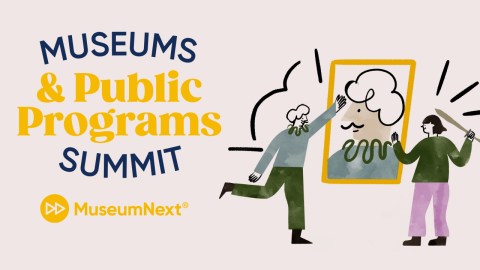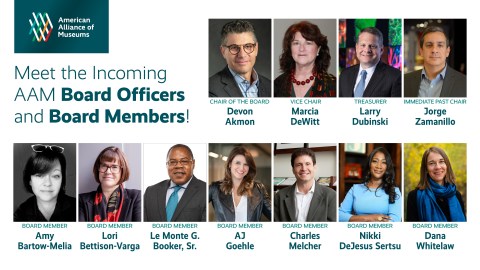I’m suffering from a bad case of “be careful what you wish for.”
The Forecasting the Future of Museum Ethics project that CFM has been running with the Institute of Museum Ethics at Seton Hall University yielded such a huge number of comments from our Oracles and from the public, that the project co-conspirators* are having trouble wrapping our brains around the input.
So if you are attending the AAM annual meeting later this month, we want to draft you to help.
Sally Yerkovich has recruited a stellar group of facilitators to lead an Idea Lounge discussion on the forecast on Monday, April 30, from 5:15–6:15 p.m. Our not-so-hidden agenda for Writing a Museums Ethics Code for the Future is to shake loose the first pebbles in an avalanche that will sweep in the next revision of the AAM Code of Ethics for Museums. Plus, we really need help making sense of the mass of details in this document—our first stab at compiling the results of the forecast. Even this crude distillation clocks in at 46 pages. Urk.
Of course, you can join the Idea Lounge discussion without wading through the semi-digested results, but reading the compilation might jump-start your thinking. And earn you my undying gratitude.
The forecast focuses on six issues:
- Accessibility
- Conflicts of interest
- Control of content
- Collecting and deaccessioning
- Diversity
- Transparency and accountability in governance, operations and finance
In our first pass through the data, we crunched the numbers for responses to questions such as “will museums will deal with [this issue] more or less frequently in the future?” Then we selected and grouped (copious) narrative responses, especially regarding the changes in the environment relevant to each issue—and or how the museums might respond to these changes.
But we still have more work ahead to clarify the big picture emerging from these pixilated data points. After poring over the results, I’m just beginning to get a sense of “so what?” And I’m seeing interesting connections between different issues.
For example, some of the comments in the “conflict of interest” section coalesce with comments in the collections section, especially around the issue of donor intent. (Recent news items and conversations I’ve had with museums seeking input from AAM reinforce the connection.) There seems to be a strange dichotomy regarding a museum’s ethical obligations to a donor’s intent. On one hand, a number of people seem to hold that, once a donor is dead, a museum should do all it can to try to determine and adhere to what the donor would have wanted, even in contemporary situations that the poor old soul could never have foreseen. However, living donors may well be given a slap on the wrist and chided for having inappropriate expectations regarding the influence they can wield as a result of their support. How do we reconcile these attitudes?
In the Idea Lounge discussions, we hope you will help us discover more connections between remarks, significant patterns and emergent meanings.
You can read past posts relating to the Forecast here and about the project in general on the CFM website.
See you in Minneapolis Saint Paul!
*my co-conspirators being Sally Yerkovich, director of the Institute of Museum Ethics, Seton Hall University; Erik Ledbetter, founder of Heritage Management Solutions; and Philip Katz, who directs AAM’s research program.








